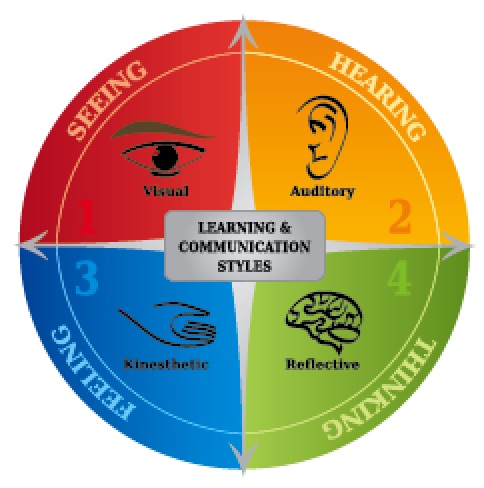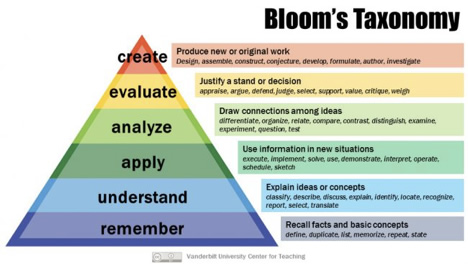Parent education to prevent abusive head trauma
The process of parent education
 There are several steps involved in effectively teaching what the parent and other caregivers need to know and coaching them about how to prevent harming a child. The involvement of patients and family members in the process of patient education is promoted within the Joint Commission’s standard for patient education. According to the Joint Commission:
There are several steps involved in effectively teaching what the parent and other caregivers need to know and coaching them about how to prevent harming a child. The involvement of patients and family members in the process of patient education is promoted within the Joint Commission’s standard for patient education. According to the Joint Commission:
- The educational methods and instruction need to match the parent’s level of understanding and assessed needs.
- The learning assessment should include cultural and religious beliefs, emotional barriers, desire and motivation to learn, physical or cognitive limitations and barriers to communication.
- Basic health and safety information including risks.
- Evaluate the parent's understanding of the education and training.
- Instructions for self-care upon discharge. (Adapted from The Joint Commission Comprehensive Accreditation and Certification Manual) https://e-dition.jcrinc.com/Frame.aspx
Assessment of the learning needs
In Mager’s book (1997), Analyzing Performance Problems: Or, You Really Oughta Wanna--How to Figure out Why People Aren't Doing What They Should Be, he describes three issues that can lead to non-adherence to a prescribed plan of action: knowledge problems, system problems or compliance problems. For individuals to successfully adopt a positive mode of action they must
- Know what to do
- Be in a system that supports the action and
- Be motivated by the benefits of the new behavior.
Example with preventing Abusive Head trauma
An education program about Abusive head trauma can help clients know what not to do to a child, how to provide comfort for the infant, and how to keep an infant safe. Violence, substance abuse, unstable family situation and poverty can be precipitating factors for AHT. If the system the client lives in has violence, alcohol or substance abuse and/or poverty, it may be difficult for one person to keep a child safe in that environment. These issues can also be addressed, and assistance offered as part of the educational program.
Learning styles
 When doing an education class, it is important to address a number of learning styles for effective teaching. One of the simplest yet effective tool is the VAK (Visual, auditory, kinesthetic) learning style from the field of neurolinguistics. In this tool individuals are visual, auditory or kinesthetic learners. If you are a visual learner you learn by reading, watching, or writing. You use the words and phrases that indicate vision, such as See what I mean. If you are an auditory learner, you listen, ask for information, like to discuss situations, talk on the phone. You use words and phrases that indicate sound, such as I hear what you said. If you are a kinesthetic learning, you learn through touching, demonstrating, handling objects. You use words and phrases that indicate feeling or doing, such as Let me try that.
When doing an education class, it is important to address a number of learning styles for effective teaching. One of the simplest yet effective tool is the VAK (Visual, auditory, kinesthetic) learning style from the field of neurolinguistics. In this tool individuals are visual, auditory or kinesthetic learners. If you are a visual learner you learn by reading, watching, or writing. You use the words and phrases that indicate vision, such as See what I mean. If you are an auditory learner, you listen, ask for information, like to discuss situations, talk on the phone. You use words and phrases that indicate sound, such as I hear what you said. If you are a kinesthetic learning, you learn through touching, demonstrating, handling objects. You use words and phrases that indicate feeling or doing, such as Let me try that.
A crucial concept about learning styles is our tendency to teach the way we learn. If as a teacher, you are visual, you will use handouts, visual aids, videos. However, if the learner is primarily auditory, they will ask for explanations and want the instructor to talk to them about the information. Teaching in one style that is not consistent with the learner’s is often the biggest disconnect between student and teacher. When teaching groups of individuals, it is best to use a variety of presentations to respond to any learning style.
Most individuals have a primary style in which they learn the best. Here is a website where you can access a VAC test to determine your style. https://www.businessballs.com/self-awareness/vak-learning-styles/
There are other learning style tests, many of which flow from the original work of Carl Jung. He was one of the first psychologists to identify inherit differences in personalities of individuals. In his framework, Jung described individuals as Extroverted or Introverted, Perceiving or Judging, Thinking or Feeling, Sensing or Intuiting. The Myers-Briggs Type Indicator, a very popular personality test, is based on Jung’s work as is the Keirsey Temperament Sorter. Here is a website that enables you to take the Myer-Briggs Type Indicator. http://www.truity.com/view/tests/personality-type
Reading levels of patient materials
The American Medical Association (AMA) and the National Institutes of Health (NIH) recommend patient education materials to not be higher than a sixth-grade reading level (Weiss et al., 2005). Several studies have shown patient education materials used in health care organizations and online are written at a much higher level, presenting a deterrent to the comprehension of important information. Most word processing systems have a readability analysis in their system. The most popular and well-validated is the Flesch-Kincaid formula to analyze grade level readability. When using Word, the spell check must be completed first then the statistics on the area being typed, including the Flesch-Kincaid reading level, will come up.
Developing goals and objectives
 Blooms taxonomy is often used to develop educational objectives. Blooms taxonomy is described in different levels. Each level has specific words that describe in behavioral terms what the learner should be able to know or do.
Blooms taxonomy is often used to develop educational objectives. Blooms taxonomy is described in different levels. Each level has specific words that describe in behavioral terms what the learner should be able to know or do.
Learning objectives should be specific, attainable, and measurable. Most objectives used in patient education are written from the bottom three levels. Here are some examples that relate to Abusive Head Trauma.
Upon completion of these instructions, the parent will be able to:
- Remember
List four dangers of shaking a baby
- Understand
Describe what happens to an infant’s brain when it is severely shaken.
- Apply
Demonstrate four comfort measures to soothe a crying baby.
- Analyze
Examine the precursor conditions that can lead to shaking an infant.
- Evaluate
Appraise a recommended approach to preventing AHT.
- Create
Develop a plan for what to do if they cannot cope with a crying infant.
(For more information go to https://cft.vanderbilt.edu/guides-sub-pages/blooms-taxonomy/)
Content, time and presentation method
The next step is to decide on what information the client will need to achieve the objectives, as well as how much time to allot for that information, and how to present the information. The content in this course can be used to explain AHT. RnCeus Interactive is a free to view website.
This is an example of a typical instruction form for an educational activity that contains the connection between the objectives, content, time, teaching methods and evaluation.
Objectives |
Content |
Amount of time |
Teaching methods |
Evaluation |
| Describe shaken baby syndrome/ Abusive Head Trauma. |
1.Definition
2.What happens to the infant’s brain. |
60 min |
Presentation using power point slides Handout
Video - Portrait of a Promise: Preventing Shaken Baby Syndrome. |
Ask the client to write what information was most impactful for them. |
Carrying out the teaching
 Patients can listen to instruction, watch videos, read handouts at convenient times. Hospitals should have instructional materials available. All instruction should be noted in the patient’s record or in an educational folder if this is an outpatient course.
Patients can listen to instruction, watch videos, read handouts at convenient times. Hospitals should have instructional materials available. All instruction should be noted in the patient’s record or in an educational folder if this is an outpatient course.
Examples of Methods and Materials
Teaching methods
- One-on-one sessions
- Small group discussions and support groups
- Demonstration and return demonstration
- Role-playing
- Games
- Programmed instruction
Teaching Materials
- Pamphlets and brochures
- Posters and flip charts
- Videos
- Computer – assisted instruction – Internet, CDs
- Audiocassettes
- Transparencies
- Models
Instruction evaluation
There should also be an evaluation the patient and/or family member complete about the instruction that was given. Typically questions about the quality of instruction, relevance and presentation are asked in a paper and pencil form. Providing resources is helpful for patients and family members.
Instant Feedback:
The effective instructor will present information consistent with the participant's level of understanding and style of learning.
References
Boyd, M.D. (1998). Strategies for effective health teaching. In: Boyd, M., et al. Health Teaching in Nursing Practice, 3rd ed. Stanford, Conn.: Appleton & Lange, 201-228.
Mager, R. & Pipe, P. (1997). Analyzing Performance Problems: Or, You Really Oughta Wanna--How to Figure out Why People Aren't Doing What They Should Be, and What to do About It. Atlanta: Center for Effective Performance.
Weiss, B., Mays, M. Z., Martz, W., Castro, K. M., DeWalt, D. A., Pignone, M. P., Mockbee, J., & Hale, F. A. (2005). Quick assessment of literacy in primary care: the newest vital sign. Annals of Family Medicine, 3, 514-522.
Resources for Nurses - Abusive Head Trauma
- Video - https://www.youtube.com/watch?v=m9m5KwvX0pQ. This is an excellent video for the lay public about AHT
- The Mayo Clinic website, https://www.mayoclinic.org/diseases-conditions/shaken-baby-syndrome/symptoms-causes/syc-20366619, contains good information about Shaken Baby Syndrome It is important to inform patients and their families to look at credible websites online to avoid misinformation.
- NINDS shaken baby syndrome information page. National Institute of Neurological Disorders and Stroke. https://www.ninds.nih.gov/Disorders/All-Disorders/Shaken-Baby-Syndrome-Information-Page. Accessed Sept. 8, 2017.
- https://www.medscape.com/viewarticle/725823 This website contains a video on making the diagnosis of Shaken Baby Syndrome.
- https://www.cdc.gov/violenceprevention/childabuseandneglect/Abusive-Head-Trauma.html. CDC details about preventing abusive head trauma in children..
©RnCeus.com
 There are several steps involved in effectively teaching what the parent and other caregivers need to know and coaching them about how to prevent harming a child. The involvement of patients and family members in the process of patient education is promoted within the Joint Commission’s standard for patient education. According to the Joint Commission:
There are several steps involved in effectively teaching what the parent and other caregivers need to know and coaching them about how to prevent harming a child. The involvement of patients and family members in the process of patient education is promoted within the Joint Commission’s standard for patient education. According to the Joint Commission: When doing an education class, it is important to address a number of learning styles for effective teaching. One of the simplest yet effective tool is the VAK (Visual, auditory, kinesthetic) learning style from the field of neurolinguistics. In this tool individuals are visual, auditory or kinesthetic learners. If you are a visual learner you learn by reading, watching, or writing. You use the words and phrases that indicate vision, such as See what I mean. If you are an auditory learner, you listen, ask for information, like to discuss situations, talk on the phone. You use words and phrases that indicate sound, such as I hear what you said. If you are a kinesthetic learning, you learn through touching, demonstrating, handling objects. You use words and phrases that indicate feeling or doing, such as Let me try that.
When doing an education class, it is important to address a number of learning styles for effective teaching. One of the simplest yet effective tool is the VAK (Visual, auditory, kinesthetic) learning style from the field of neurolinguistics. In this tool individuals are visual, auditory or kinesthetic learners. If you are a visual learner you learn by reading, watching, or writing. You use the words and phrases that indicate vision, such as See what I mean. If you are an auditory learner, you listen, ask for information, like to discuss situations, talk on the phone. You use words and phrases that indicate sound, such as I hear what you said. If you are a kinesthetic learning, you learn through touching, demonstrating, handling objects. You use words and phrases that indicate feeling or doing, such as Let me try that. Blooms taxonomy is often used to develop educational objectives. Blooms taxonomy is described in different levels. Each level has specific words that describe in behavioral terms what the learner should be able to know or do.
Blooms taxonomy is often used to develop educational objectives. Blooms taxonomy is described in different levels. Each level has specific words that describe in behavioral terms what the learner should be able to know or do.  Patients can listen to instruction, watch videos, read handouts at convenient times. Hospitals should have instructional materials available. All instruction should be noted in the patient’s record or in an educational folder if this is an outpatient course.
Patients can listen to instruction, watch videos, read handouts at convenient times. Hospitals should have instructional materials available. All instruction should be noted in the patient’s record or in an educational folder if this is an outpatient course.